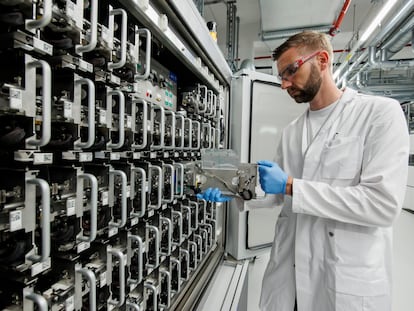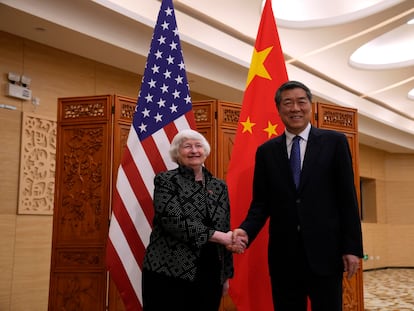The battle for lithium: US and China fight over Argentina’s white gold
President Javier Milei is making the most of the global competition to ensure access to a mineral that is critical to making batteries for energy storage and EVs. Residents of boom towns wonder how long it will last
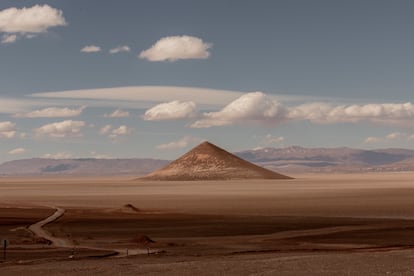
At the edge of the Argentine Andes, in the vast and rugged Puna, a land of icy winds and frigid temperatures, lies what was once the prosperous town of Mina La Casualidad. Despite being completely isolated, a nearby sulfur mine gave life to this town located in Salta, the northwestern province of Argentina. For decades, mine employees and their families made this inhospitable place their home.
Today, Mina La Casualidad is a ghost town. The closure of the mine in 1979 marked its destiny. Its empty streets and ruined houses remained deserted for years, surrounded by snowy peaks and the silence of the salt flats. But a new wave of mining activity has rocked the region, this time caused by the intense lithium rush. The lightweight element is essential for the production of batteries for energy storage and electric cars, technologies that are the cornerstone of the so-called clean economies.

Nearly untouched for millions of years, the salt flats of the inhospitable Puna plateaus are being transformed into a dynamic center of lithium production, bringing with them both economic opportunities and concerns about environmental damage. North of the ruins of Mina La Casualidad, several heavy-duty trucks cross the mountains towards the Mariana mine, a large lithium project under construction, operated by the Chinese company Ganfeng, one of the largest producers of lithium in the world.
The mine is one of the five projects that the lithium giant is carrying out in Argentina, a country that has become the scene of a strategic rivalry between China and the United States, where both seek to obtain the necessary supplies for the manufacture of batteries.
Argentina, the fourth largest lithium producer in the world, holds a fifth of the world’s reserves. It is the second largest deposit on the planet. As the country’s production soars, both Beijing and Washington want to take a piece of Argentina’s “white gold.”
China, the main producer of lithium batteries and the country that refines the most lithium in the world, has a clear advantage when it comes to investing in Argentina’s nascent industry. But the U.S., which is seeking to develop its own clean technology production chains outside of Chinese control, is trying to counter Beijing’s growing influence in South America with new investments.
“Having taken a passive role in terms of long-term strategic interests, the United States is trying to identify fields in which it can displace China's dominance,” says Rachel Ziemba, a senior fellow at the Center for a New American Security.
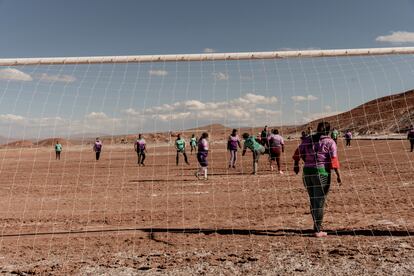
Fight between the US and China
Almost 60% of the deposits of this mineral in the world are concentrated in the lithium triangle, an area the size of California that covers territories in Argentina, Chile and Bolivia. In this region, lithium is extracted from brine located beneath the salt flats.
But while Bolivia faces difficulties achieving significant production, and lithium extraction in Chile has stalled, Argentina is going full speed ahead thanks to private investments. In recent years, the country has emerged as one of the most attractive markets for investment, attracting a host of international companies to its lithium-rich and underexploited salt flats.
Nearly 40 projects, most in advanced stages, are underway in the northwest of the country. A recent analysis of the global industry found that 11 of the 42 lithium projects expected to begin production between 2022 and 2026 are in Argentina, more than any other country.

Argentine government data shows that between 2020 and 2023, Chinese companies invested $3.2 billion in mining projects, including seven lithium projects — almost double that of U.S. companies, which financed three lithium projects. Chinese investments have been successful. In 2023, more than 40% of Argentina’s lithium exports went to China, compared to 9% to the U.S.
But the election of the right-wing Javier Milei, a self-proclaimed anarcho-capitalist, has marked a shift in Argentina’s foreign policy, which has moved away from previous left-wing governments’ preferred ties with China; instead, Milei is favoring a closer relationship with the U.S. at the expense of Beijing. In December, Milei rejected an invitation to join the expanded group of emerging economies known as the BRICS, in which China is a dominant player.
At a time when “Western countries are realizing the geopolitical consequences of having ignored the lithium triangle for so long, everything Milei is doing is music to the ears of U.S. officials,” says Leland Lazarus, associate director of national security at the Gordon Institute for Public Policy at Florida International University.
The U.S. has courted the Milei administration to guarantee the import of Argentine lithium. During a visit to Argentina in February, U.S. Secretary of State Antony Blinken said the U.S. saw “an extraordinary investment opportunity” in the country, citing lithium as a key area for U.S. investment.
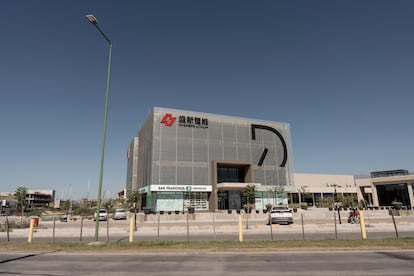
The U.S. International Development Finance Corporation and the Mineral Securities Partnership (MSP), an alliance of 14 countries seeking to boost investment in critical mineral supply chains, are exploring new investment opportunities in the country, Blinken said. According to his statements, Argentina has committed to joining that forum to accelerate the development of projects.
But the investments promised by the United States are taking time to come true. “It’s not clear to me what the U.S. is contributing right now,” says Ziemba. At the same time, Milei’s free-market policies could be a boon for foreign companies looking to invest in Argentine lithium. A bill moving through Congress promises tax cuts and regulatory stability for large investments, particularly in the mining sector.
Elon Musk, Milei's ally
There is one major investor who has Milei’s attention. Tesla owner Elon Musk, who is seeking to secure lithium supplies to produce batteries for his electric cars, has publicly supported and courted the president ever since his election.
After discussing “investment opportunities” in lithium during a meeting in April, Musk wrote on the his social media app X in May: “I recommend investing in Argentina.”
To an exciting & inspiring future! pic.twitter.com/WUIqN7B2F6
— Elon Musk (@elonmusk) April 12, 2024
While this exuberant rhetoric takes place, China continues to quietly expand its portfolio of lithium projects across the country, cementing its position as a key trade and financial partner. Despite Milei’s opposition to China’s socialist policies, his administration has preserved diplomatic ties with Beijing. Experts agree that Argentina cannot afford to cut those ties.
The lithium economy in Salta
The province of Salta, located at the heart of Argentina’s lithium mining boom, has attracted the largest amounts of Chinese mining investment in recent years. “Since the pandemic and up until today, 95% of the province’s mining has been dedicated to lithium,” says Salta’s mining secretary, Romina Sassarini. “Today we have the largest number of exploration projects in the country.”

With the investments came a rapid transformation of the area. New gravel roads are being built connecting small towns to mining fields. Miners rent rooms and fill the small restaurants in the area. However, dozens of people who live in towns in the area confess their mixed feelings regarding lithium fever, an issue that has divided some communities.
The mining rush is creating unprecedented job opportunities, but its impact on the environment worries many people. Some are reluctant to speak out against lithium mining for fear of retaliation from their neighbors, who make a living from the new industry.
That is not the case of Marta Ríos, 60, a resident of Tolar Grande, a town bordering the Arizaro salt flats, one of the largest in the world. “Before it was just us. You could drive for miles and not meet anyone,” she says. “Now so many companies have come in search of our lithium that we are starting to worry. What will be left of our salt flat when they leave?” she wonders. “With so many tracks on the roads and so much drilling, it’s going to be like a sieve.”

However, the arrival of the lithium craze has brought full employment to Tolar Grande, and has created numerous jobs. Employers are on the lookout for security personnel, drivers and cleaners. Technical and corporate roles are often given to more skilled workers from outside the region.
Blue-collar mining jobs offer better pay than most other local opportunities. Monthly salaries of more than half a million pesos — almost $500, double the minimum wage — are considered a small fortune in an area that is finally seeing decades of exodus of young people to the cities slowly being reversed.
The growing industry prefers to avoid scrutiny. The multiple requests to visit the mining operations made by this newspaper were rejected, alleging insufficient capacity to receive visits.
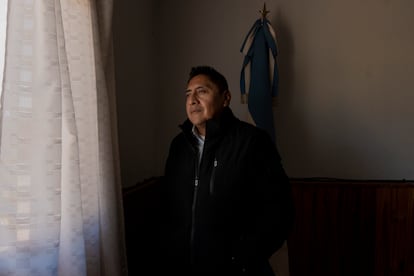
The Chinese method
In July, the province of Salta will inaugurate its first lithium mine: Centenario-Ratones, a joint venture between the French company Eramet and the Chinese firm Tsingshan, which is seeking to establish itself as one of the main producers of minerals for batteries.
The mine is expected to produce 24,000 tons of lithium carbonate per year, equivalent to more than half of Argentina's exports of that mineral in 2023.
The project will implement an emerging lithium extraction technique, considered faster and greener, known as direct lithium extraction (DLE). The technology has been hailed as potentially “revolutionary” for the industry and promises to reduce water consumption, a scarce resource in this arid region, while increasing production. However, it has not yet been tested on a large scale.
Eramet claims that the DLE will allow it to recycle 60% of the fresh water the mine uses. “We believe that it is possible to carry out mining productively with the lowest possible environmental impact,” said Constanza Cintioni Ovejero, sustainability director of Eramet's subsidiary in Argentina.
The Centenario-Ratones mine reflects the growing importance of Chinese investments in the region. Even though lithium prices fell more than 80% in 2023, prompting some Western companies to slow down operations, Chinese investments have remained steady.
In March, Chinese company Ganfeng expanded its stake in Argentina's lithium by purchasing 15% of Lithium America's Pastos Grandes project, at a time when it was facing difficulties and needed capital, according to industry sources.
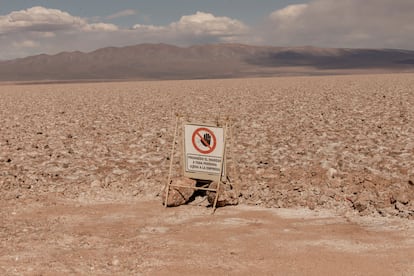
For MacMurray Whale, a lithium specialist at Cormark Securities, Argentina’s nascent lithium market bodes well for Chinese companies. “These companies think long term,” he says. “While companies like [U.S.-based] Albemarle may worry about next year’s cash flow, companies like Ganfeng will simply move forward as they consider their investment over a decade.”
Additionally, Chinese companies tend to operate across the entire lithium production chain, making them less vulnerable to volatile markets and giving them an advantage over their Western counterparts, Whale says. For example, Ganfeng's operations include lithium mining, refining and processing, battery manufacturing and even recycling.
“China is doing this excellently,” says a U.S. Geological Survey lithium expert who cannot be identified due to agency policy. “They have been making these lithium deals for more than a decade and have at least a 10-year head start on the United States.”
Washington, for its part, has openly expressed concerns about China’s investments in South American lithium. The U.S. military has publicly noted the risk this represents to its own clean technology production chains. Speaking at the American think tank Atlantic Council, General Laura Richardson, a U.S. military figure in the southern hemisphere, mentioned her efforts to increase investments in the region and “displace” her competitors amid “strategic competition” with China.
Rise and fall
The volatility of lithium in global markets is being experienced first-hand in the province of Salta. The collapse in the price of the metal has caused delays in mining operations. Locally, some are concerned that the economic benefits that lithium has brought will not last.
In a small restaurant in the town of Pocitos, a group of miners celebrate Labor Day with locro, a pumpkin stew popular in the Andes. The staff brings a cake decorated with a toy excavator.
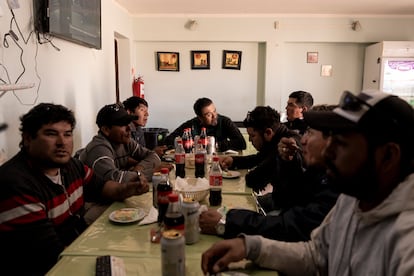
The daily life of a miner is arduous. Workers describe 12-hour shifts alternating days and nights for 21 consecutive days, drilling wells up to a mile deep with temperatures reaching -18°C (-0.4ºF). “The sun, the wind consume you, and the salt from the salt flat burns your skin,” says one of them.
“I hope to be able to retire doing this,” says Jorge Valdez, 40. "But we'll see how things go."
For residents of these arid plateaus, the end of sulfur mining in the region remains a vivid reminder of the transitory nature of mining companies. “We don’t want to have a new Mina La Casualidad here,” says Sergio Villanueva, the mayor of Tolar, a town of 300 residents.
In recent years, Tolar has become a crucial lithium hub in the area. But “every mine has an end, and we don’t want the town to disappear once the mining is gone,” Villanueva said.
The mayor wants lithium companies to finance the construction of paved roads and other key infrastructure so that the town can make a living from tourism when the mines close.

Others are not so optimistic. “I don’t think it will bring development to the region,” says Porfirio Puca, a park ranger from Ojos de Mar, one of the natural wonders of the region. “People work for one or two years, and then the company dissolves, leaving behind the holes they drilled in the salt flat. That’s what happened with La Casualidad. “Everything was left behind, like a cemetery of our ancestors.”
Among the rubble of that town, a white paint inscription on a rusty storage tank reads: “Native of La Casualidad. We will be back". So far, only lithium miners have returned.
Sign up for our weekly newsletter to get more English-language news coverage from EL PAÍS USA Edition
Tu suscripción se está usando en otro dispositivo
¿Quieres añadir otro usuario a tu suscripción?
Si continúas leyendo en este dispositivo, no se podrá leer en el otro.
FlechaTu suscripción se está usando en otro dispositivo y solo puedes acceder a EL PAÍS desde un dispositivo a la vez.
Si quieres compartir tu cuenta, cambia tu suscripción a la modalidad Premium, así podrás añadir otro usuario. Cada uno accederá con su propia cuenta de email, lo que os permitirá personalizar vuestra experiencia en EL PAÍS.
¿Tienes una suscripción de empresa? Accede aquí para contratar más cuentas.
En el caso de no saber quién está usando tu cuenta, te recomendamos cambiar tu contraseña aquí.
Si decides continuar compartiendo tu cuenta, este mensaje se mostrará en tu dispositivo y en el de la otra persona que está usando tu cuenta de forma indefinida, afectando a tu experiencia de lectura. Puedes consultar aquí los términos y condiciones de la suscripción digital.
More information
Archived In
Últimas noticias
Welcome to the post-religion era: The idea of Christianity as the absolute truth has become obsolete
‘I thought you would like it’: The risky sexual practice popularized by TV shows and TikTok
The digitalization of tourism: ‘They promise experiences and gave us the worst possible one’
Mexican peso defies uncertainty with forecasts of a new period of stability in 2026
Most viewed
- Sinaloa Cartel war is taking its toll on Los Chapitos
- Oona Chaplin: ‘I told James Cameron that I was living in a treehouse and starting a permaculture project with a friend’
- Reinhard Genzel, Nobel laureate in physics: ‘One-minute videos will never give you the truth’
- Why the price of coffee has skyrocketed: from Brazilian plantations to specialty coffee houses
- Silver prices are going crazy: This is what’s fueling the rally
